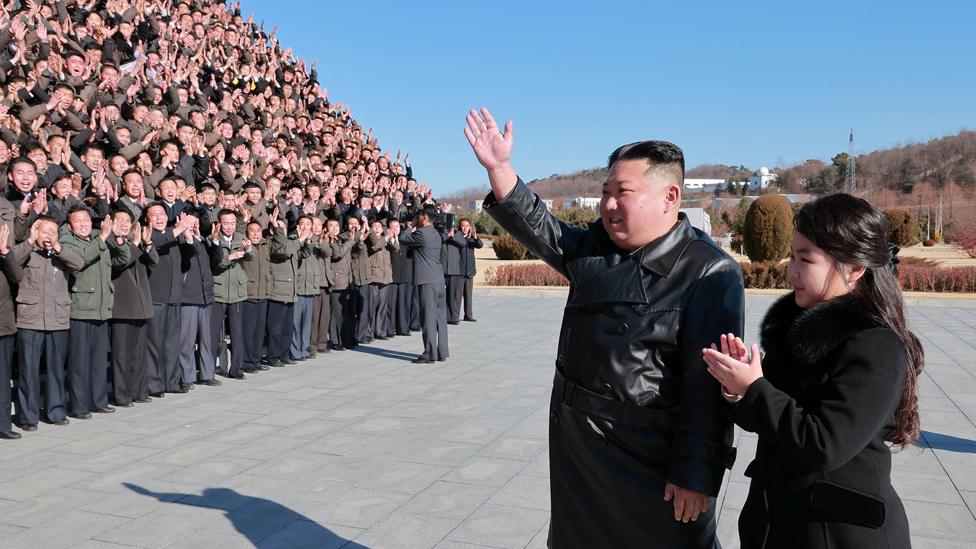Succession questions raised by presence of Kim’s daughter
- Published
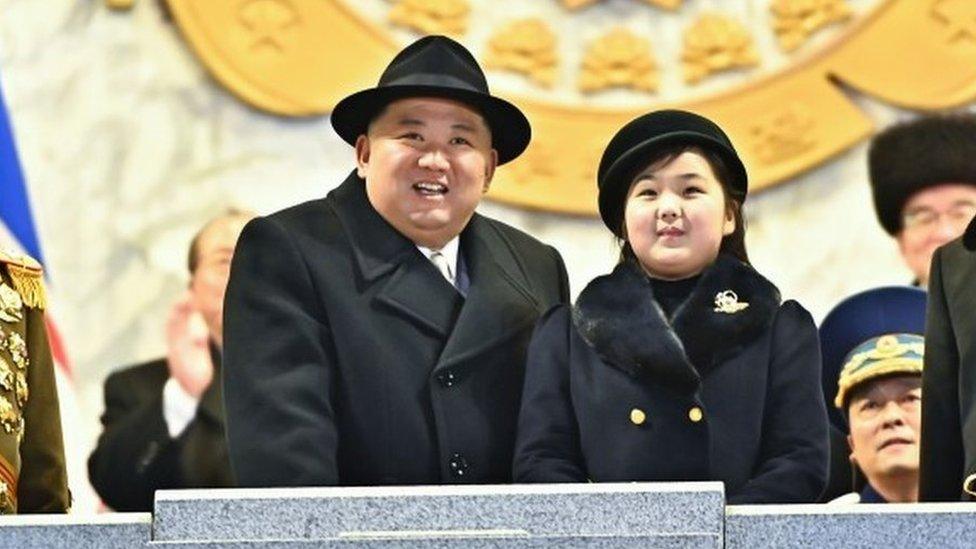
On Wednesday night lines of monster missiles rolled through the North Korean capital Pyongyang. But it was not just his weapons that Kim Jong-Un was parading. On show too, was his daughter.
As the North Korean leader took up his usual parade position, at the centre of the balcony, he was joined, unusually, by the young girl dressed in black.
She is thought to be his second oldest child, called Kim Ju-ae, aged around 10 years of age.
This is the fifth public appearance she has made, and all in less than three months.
During this short time she has undergone a remarkable transformation, making it increasingly likely she has been chosen as the future leader of North Korea.
When she first appeared, back in November of last year, at the launch of an intercontinental ballistic missile (ICBM), speculation was rife. Many whispered: Would this girl one day lead the world's most secretive state?
But at the time it was far too big a leap to make.
Wearing a white puffer jacket, with red ballet pumps and a ponytail, clutching her father's hand, she appeared so young. Perhaps Mr Kim just wanted to portray himself as a good father or make crystal clear his family, with all its weapons, was here to stay.
But with each appearance the young Kim appears to have grown in stature.
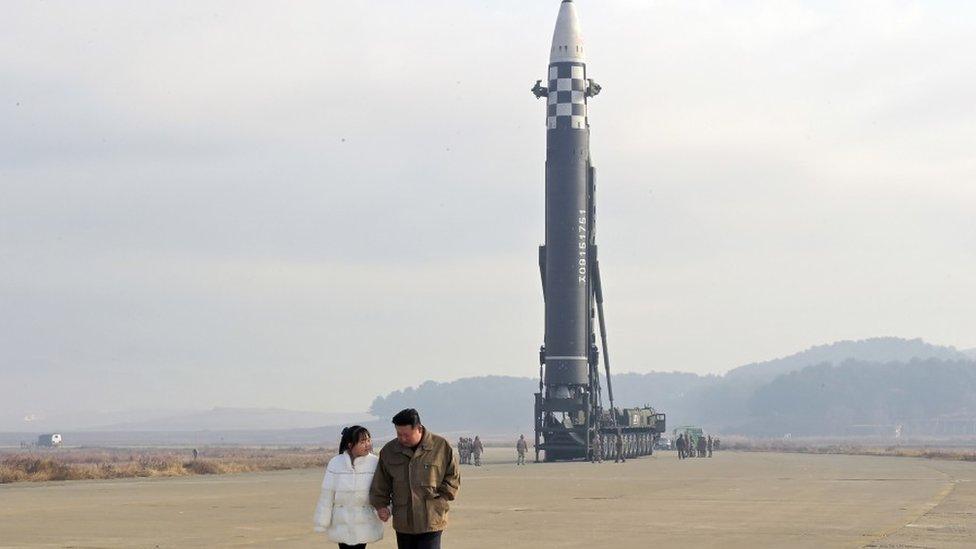
On Tuesday night, ahead of the parade, she attended a banquet for North Korea's top military officials. This time she dressed in a demure white shirt and black buttoned-up skirt suit, with her hair clipped back. The photographs were jaw-dropping for many a North Korean watcher. In each picture she takes centre-stage, sitting between her mother and father, and surrounded by military officials.
Another intriguing development has been the language used to describe the young Ms Kim.
She was first introduced in state media as Kim Jong-Un's "beloved" daughter. By Tuesday's military banquet she had been elevated to the status of "respected" daughter. It is an adjective reserved for only the most revered. Only after Kim Jong-Un's status as future leader was cemented, was he referred to as "respected comrade".
Since its foundation, North Korea has been ruled by three generations of the Kim family. Its citizens are told that the family hails from a sacred bloodline, meaning only they can lead the country. Kim Jong-Un will want to ensure he passes the mantle down to the fourth generation.
But even if Ms Ju-ae is the intended heir, why introduce her so early, and at such speed? Kim Jong-Un is only 39 - his daughter still a child.
Mr Kim was reportedly revealed as the successor to his father Kim Jong-Il when he was eight years old, but only in private to military leaders.
Publicly, it was only made clear about a year before his father died. This gave him a rocky start to the job, as he worked ruthlessly to consolidate power.
Perhaps he is trying to give his daughter an easier ride, by ensuring her position is more established by the time she takes over. Perhaps his health is not in great shape, and he does not have as long as we think. Both, of course, are impossible to know.
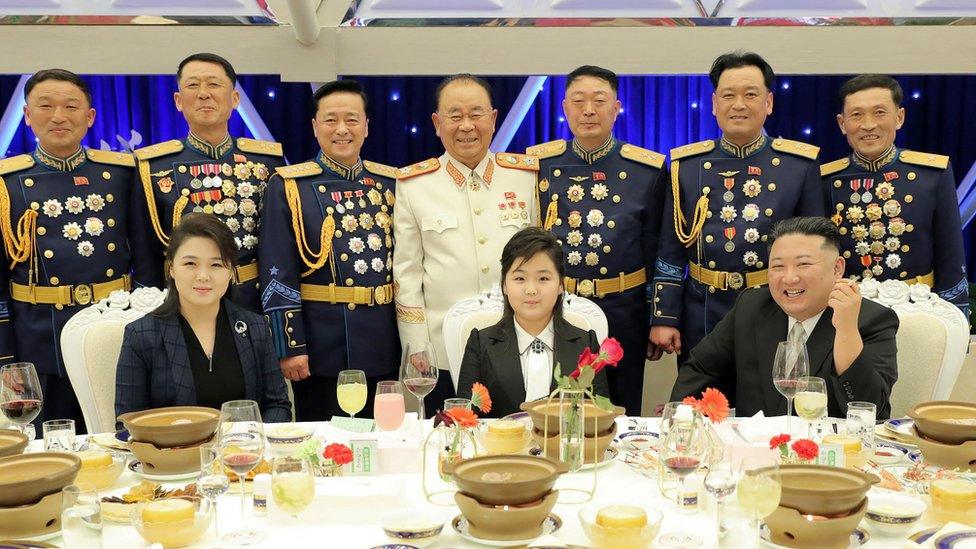
Eyebrows were raised when Kim Ju-ae was given pride of place between her father Kim Jong-Un and his wife Ri Sol-Ju sit at a military banquet.
Another reason Kim Jong-Un may need so much time, is to overcome the prejudices of what is a deeply patriarchal society. North Korea has never been led by a woman, despite having some women in high places - Kim's sister Kim Yo-Jong is the most prominent example.
James Fretwell, an analyst for the North Korean monitoring platform NK News, does not think this is insurmountable.
"While North Korea is a male-dominated society, it's also a Kim-dominated society," he told the BBC. "More than anything, her bloodline will make her potential leadership candidate. It would be more surprising if someone outside of the ruling Kim family - male or female - managed to take the top spot."
That said, to install a woman at the very top will require work if she is to be truly accepted by the people, the military, and the elite.
Kim Ju-Ae's place as the next leader of North Korea is far from guaranteed, but with each appearance she makes, it certainly seems more plausible.
Additional reporting by Kelly Ng
Related topics
- Published19 November 2022
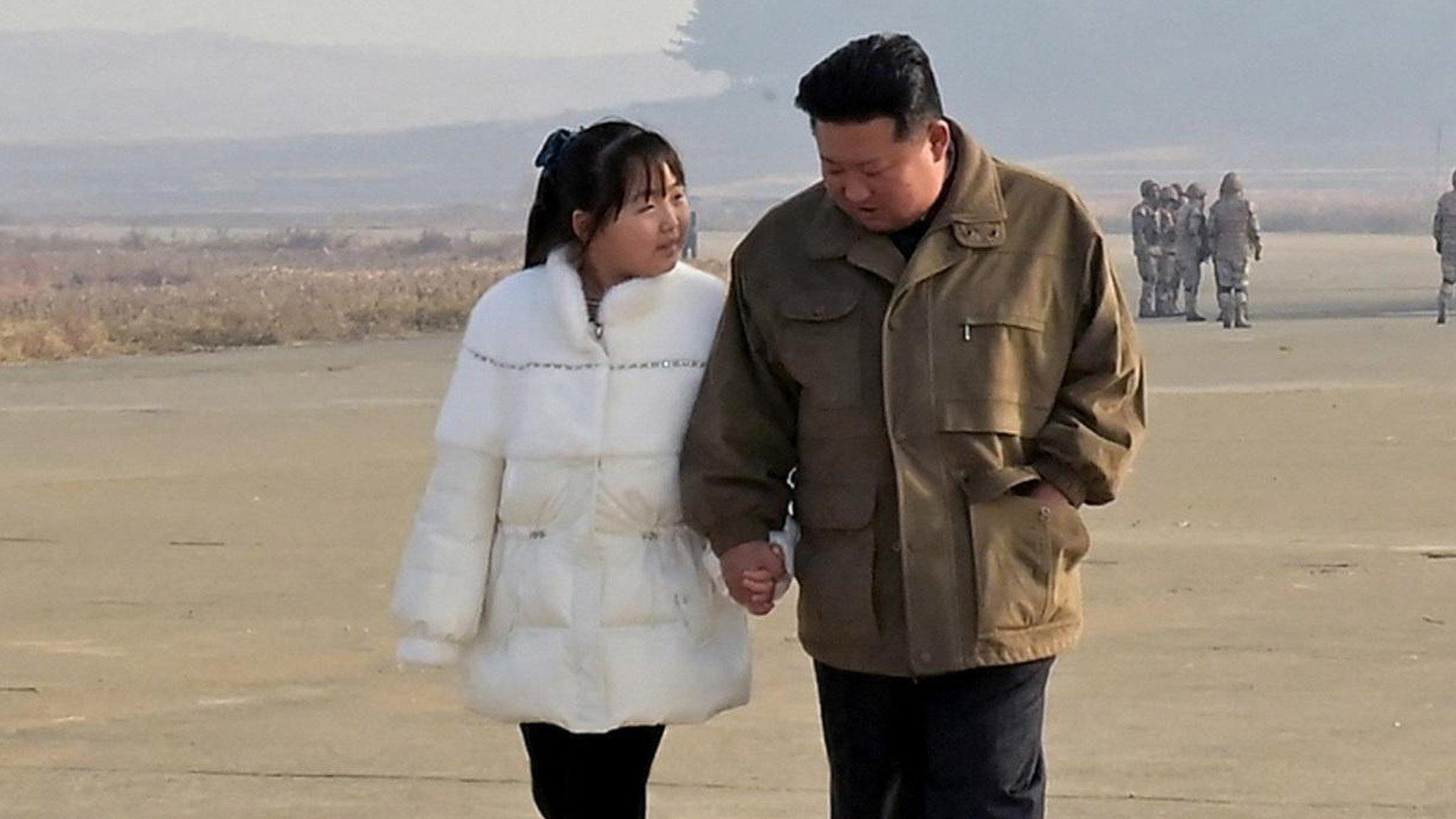
- Published9 February 2023
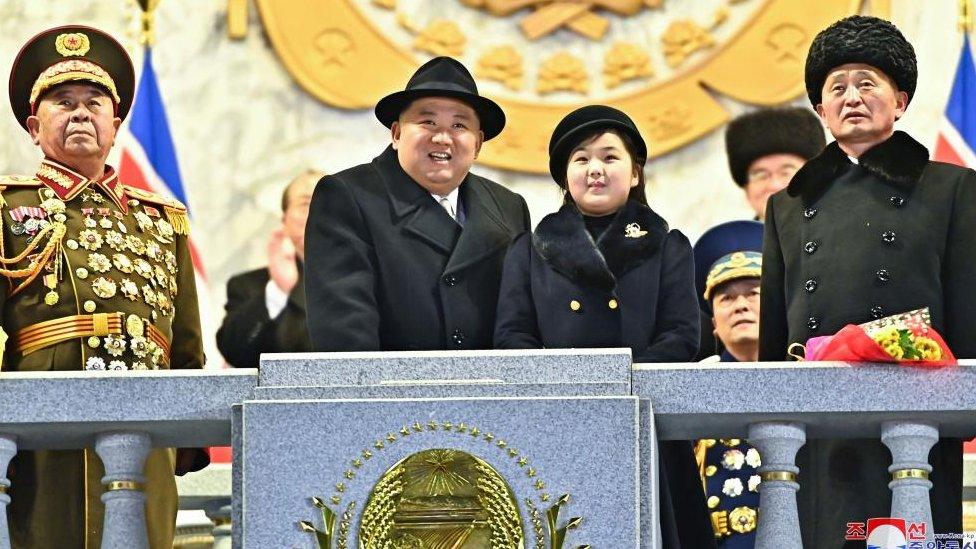
- Published3 January 2023
